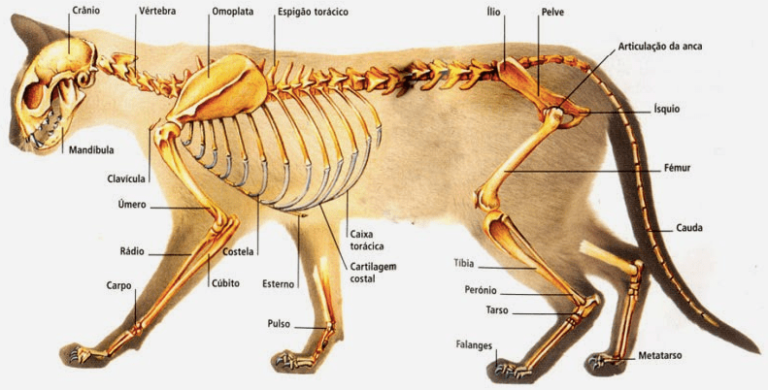Cats have a unique skeletal structure that sets them apart from other animals. This structure enables them to be agile and flexible, allowing them to perform incredible acrobatic feats. In this article, we will explore the number of bones in a cat’s body and understand their importance in supporting their various movements and behaviors.
Skeletal Structure of Cats

Cats have a unique skeletal structure that allows them to be agile and flexible. Their 244 bones are strategically distributed throughout their body, serving various functions. The skull, consisting of 29 bones, provides protection for the cat’s brain and sensory organs. It also includes the jawbone, which enables cats to chew and bite. The spine, made up of 53 bones, allows for flexibility and helps cats maintain their balance, essential for their graceful movements.
The limbs of a cat, both front and hind, contain a total of 74 bones. These bones, along with the muscles and ligaments, enable cats to perform incredible feats of jumping, climbing, and pouncing with precision. The tail, composed of 19 to 23 bones, serves multiple purposes. It aids in balance, allowing cats to land gracefully on their feet, and is also an important communication tool.
Each bone in a cat’s body plays a crucial role in supporting their various movements and behaviors. They provide a framework for the muscles and support the cat’s body during leaps, twists, and turns. Understanding the feline skeletal structure helps us appreciate their incredible athleticism and adaptability.
The Skull and Spine

The spine, on the other hand, is made up of 53 bones and is responsible for providing flexibility and balance to cats. It allows them to move with grace and agility, whether they are leaping, climbing, or simply walking. The spine supports the cat’s body and helps maintain its posture, ensuring that it can navigate its environment with ease.
Both the skull and spine are integral to a cat’s overall structure and movement. Without these regions, cats would not be able to perform their natural behaviors and activities. Understanding the importance of these bones helps us appreciate the incredible capabilities and adaptability of these fascinating creatures.
The Limbs and Tail

In addition to their limbs, a cat’s tail plays a vital role in their overall balance and communication. Composed of 19 to 23 bones, the tail acts as a counterbalance, helping the cat maintain stability while performing acrobatic feats. It also serves as a means of communication, with different tail positions conveying various emotions and intentions. Whether it’s twitching in excitement or standing upright in alertness, the tail is an essential tool for cats to express themselves and navigate their surroundings.
The Importance of Bones in Cat Behavior

By understanding the feline skeletal structure, we can appreciate the remarkable capabilities of these animals. The bones in a cat’s body play a vital role in supporting their agility and speed, allowing them to navigate through narrow spaces and leap with precision. The arrangement of bones in their limbs and tail gives them the flexibility and balance necessary for climbing, jumping, and pouncing.
Furthermore, the bones in a cat’s jaw enable them to chew and bite, essential for hunting and consuming their prey. The skull and spine, consisting of numerous bones, contribute to the cat’s overall structure and movement. Without their bones, cats would not be able to exhibit their natural behaviors and perform their impressive acrobatics.
